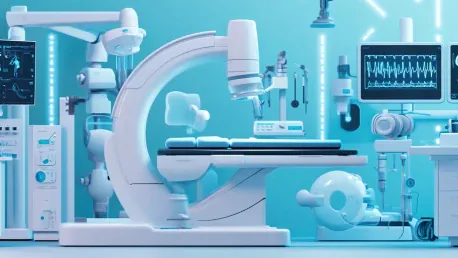Quality testing of new medical devices is a cornerstone of the healthcare industry, serving multiple critical purposes. At its core, quality testing aims to ensure that these devices are safe for patient use, comply with stringent regulatory standards, perform effectively, and uphold the reputation of the manufacturing brands. The complexity and importance of quality assurance in medical devices cannot be overstated, affecting various aspects of healthcare delivery and patient safety.
Ensuring Patient Safety
Primary Commitment to Patient Safety
The primary concern in the design and manufacture of medical devices is, without question, patient safety. Rigorous quality testing helps identify potential risks, such as design flaws or material defects, that could endanger patients. These tests are crucial in detecting any shortcomings early in the development process, allowing manufacturers to address and rectify issues before the devices are introduced to the market. The objective is to ensure that devices are not just theoretically safe but actually effective and reliable in real-world settings.
Moreover, thorough evaluations through extensive testing protocols provide a safety net for the end-users—the patients. Medical devices, whether as intricate as implantable defibrillators or as prevalent as glucose monitors, play an integral role in patients’ lives. Ensuring that these devices function without fail is a moral and professional obligation for manufacturers and crucial for maintaining trust in medical technology.
Comprehensive Testing Protocols
Different types of medical devices, ranging from surgical instruments to wearable health trackers, necessitate distinct testing protocols. Each category requires tailored assessments to evaluate all potential risks comprehensively. This multi-faceted approach ensures that every device performs reliably in real-life medical settings, thereby enhancing patient safety and improving health outcomes. For instance, surgical instruments are subject to rigorous sterility tests and mechanical performance evaluations, while wearable health trackers might go through extensive testing for software accuracy and battery life.
Additionally, the scope and complexity of these protocols emphasize the importance of not cutting corners. Comprehensive testing is an exhaustive and often iterative process that verifies not just the device’s initial functionality but its performance over time under varied conditions. This way, manufacturers can confidently ensure that their devices will not only meet the minimal thresholds required for approval but also exceed them to offer maximum reliability and safety.
Compliance with Regulatory Standards
Role of Regulatory Bodies
Regulatory entities like the Food and Drug Administration (FDA) in the United States and the European Medicines Agency (EMA) in Europe play a pivotal role in medical device certification. These organizations set stringent guidelines that medical devices must meet before they can be approved for market distribution. Quality testing is crucial for adhering to these regulatory standards, ensuring that devices are both safe and effective for public use. Compliance with these regulations demonstrates a commitment to producing high-quality products, thereby fostering trust among consumers and healthcare providers.
These regulatory authorities scrutinize every aspect of a medical device’s lifecycle, from design and manufacturing to post-market performance monitoring. Rigorous quality testing, therefore, becomes a pivotal step in meeting the extensive documentation and proof required for clearance. The regulations enforced by these bodies are continually updated to reflect new scientific data, technological advancements, and evolving healthcare needs, making compliance an ongoing commitment rather than a one-time effort.
Strict Regulations and Approval Process
By following rigorous quality testing protocols, manufacturers can navigate the stringent approval processes more smoothly. Adhering to these regulations not only facilitates market entry but also helps avoid potential fines, recalls, or rejections that can arise from non-compliance. This diligent approach signifies a manufacturer’s commitment to maintaining high standards and upholding public trust. Failing to meet regulatory standards can result in severe financial and reputational damage, making adherence not merely a legal necessity but a strategic priority.
Additionally, the approval process benefits from comprehensive testing as it provides a wealth of data to regulatory bodies. This data serves as evidence that the device performs as intended and that any identified risks have been mitigated. It can also streamline interactions with regulatory bodies, showing that the manufacturer is thorough and transparent in its processes. Walking this path not only shortens the time to market but also strengthens the manufacturer’s foothold in a competitive industry where compliance equates to credibility.
Enhancing Product Efficacy
Beyond Safety: Ensuring Performance
While safety is a primary focus, ensuring the efficacy of medical devices is equally important. Rigorous testing confirms that the devices perform at the necessary standards to meet the requirements of healthcare providers and patients. Performance evaluations might include stress tests, functionality assessments under different environmental conditions, and software accuracy checks. This validation process improves the reliability of the devices, which is crucial for effective treatment and diagnosis. By confirming that devices meet specific efficacy benchmarks, healthcare providers can make informed decisions in patient care.
Furthermore, efficacy testing covers various operational aspects, such as ease of use, integration with other medical technologies, and long-term durability. Medical devices often function as critical components in broader healthcare management systems, and their performance can directly impact diagnostic accuracy, the success of surgical procedures, and the efficiency of patient monitoring. Ensuring high performance through rigorous testing enhances the overall quality of care delivered, promoting better patient outcomes and professional satisfaction among healthcare providers.
Optimization and Clinical Outcomes
Quality testing helps optimize device functionality, leading to enhanced clinical outcomes. When healthcare professionals can rely on the performance of medical devices, they are better equipped to deliver accurate diagnoses and successful treatments. This trust in medical technology is essential for advancing healthcare services and improving patient care. Optimization doesn’t end with the device’s market entry; ongoing testing and feedback loops ensure that devices can be updated and improved throughout their lifecycle.
Regular testing and iterative improvements help address emerging issues and adapt to advances in medical understanding and technology. This dynamic approach keeps medical devices at the forefront of clinical practice, enhancing their efficacy and reliability. An added benefit is the two-way relationship between quality testing and clinical outcomes—improvements in device performance lead to better clinical outcomes, and data from clinical use inform further optimizations.
Mitigating Financial Risks
Cost Implications of Quality Testing
Investing in quality testing may appear financially burdensome, especially for smaller companies or startups. However, the long-term financial benefits far outweigh the initial costs. Rigorous testing helps prevent product recalls, lawsuits, and regulatory fines, which can be financially devastating if not addressed proactively. The upfront investment in quality testing is a form of financial prudence, reducing the risk of substantial costs that might arise from product failures, adverse events, or non-compliance with regulatory standards.
These initial outlays in testing are often recouped through enhanced market performance and customer satisfaction. Companies that prioritize rigorous testing processes are more likely to produce reliable products that meet regulatory and consumer standards, thereby reducing the likelihood of costly reworks and recalls. This proactivity results in a more stable financial environment for companies, allowing them to allocate resources towards innovation and growth rather than damage control.
Financial Prudence and Market Success
A well-tested, reliable product is more likely to achieve market success, translating into higher customer satisfaction and profitability. By prioritizing quality testing, manufacturers can mitigate potential financial risks and build a sustainable business model that supports continual innovation and growth. A product that consumers and healthcare providers trust not only gains a competitive edge but also commands premium pricing, leading to increased revenue streams.
Additionally, a strong reputation for quality can open doors to new markets and investment opportunities. Investors are more likely to back companies that have a proven track record of high-quality, compliant products. This confidence can result in better financial terms and expanded market reach, providing a solid foundation for long-term success. Financial stability gained through quality assurance also supports the company in weathering market fluctuations and adapting to regulatory changes, reinforcing a continuous cycle of innovation and growth.
Building Brand Reputation and Trust
Strengthening Brand Image
Producing consistently safe and effective medical devices enhances a brand’s reputation. Healthcare providers are more likely to choose products from manufacturers known for their commitment to quality. This trust, once established, extends to patients, who seek assurance that the medical technologies they rely on are both safe and effective. A strong brand image, bolstered by rigorous quality testing, becomes a significant asset in the competitive medical technology market.
Moreover, a positive reputation for quality and reliability can lead to valuable partnerships and collaborations with other industry leaders, academic institutions, and healthcare organizations. These associations further enhance the brand’s credibility and trustworthiness. Consistently meeting high standards through quality testing not only attracts customers but also retains them, leading to sustained market presence and customer loyalty.
Competitive Advantage and Market Share
A strong reputation for quality can differentiate a brand in a competitive market, leading to increased market share and customer loyalty. Manufacturers that prioritize quality testing not only comply with regulatory requirements but also position themselves as leaders in the healthcare industry, promoting long-term success and innovation. This competitive advantage is not just about capturing market share but about setting industry standards and influencing market trends.
Being recognized as a quality leader can also provide leverage in negotiations, opening doors to exclusive contracts and premium pricing opportunities. In the long run, this market position creates a virtuous cycle where sustained investment in quality further enhances reputation, thus attracting more customers and partners, which in turn fuels further growth and innovation. Ultimately, a robust commitment to quality testing fosters a resilient brand that thrives in a dynamic and demanding marketplace.
Continuous Improvement and Innovation
Iterative Testing and Development
Quality testing is not a one-time process but an ongoing effort that parallels continuous improvement and innovation. Regularly updated testing protocols can help identify areas for enhancement in existing devices and pave the way for new, advanced technologies. This iterative approach ensures that medical devices remain at the cutting edge of healthcare, continually improving patient outcomes. By continuously refining their products, manufacturers can respond to evolving medical needs and technological advancements, solidifying their position as innovators in the industry.
Continuous improvement through iterative testing also allows for quicker adaptation to regulatory updates and clinical feedback, ensuring that devices remain compliant and effective over time. This proactive stance helps manufacturers stay ahead of potential issues and maintain a competitive edge. Furthermore, iterative testing fosters a culture of innovation within the company, encouraging the development of novel solutions and the integration of emerging technologies into their product lines.
Feedback and Adaptation
Quality testing of new medical devices is essential in the healthcare industry, fulfilling multiple crucial roles. Primarily, it ensures that these devices are safe for patient use, meeting rigorous regulatory standards and performing their intended functions effectively. Quality testing also helps maintain the high reputation of the brands that manufacture these devices. The significance and intricacy of quality assurance for medical devices should not be underestimated, as it impacts various facets of healthcare delivery and patient safety.
Beyond merely ensuring safety and compliance, quality testing of medical devices plays a pivotal role in fostering innovation. It allows for the development of more advanced medical technologies by identifying potential flaws and areas for improvement. This is particularly important as the medical field constantly evolves, demanding more sophisticated and reliable tools to meet emerging healthcare needs.
Additionally, thorough quality testing can prevent costly recalls and legal issues that may arise from malfunctioning devices. By rigorously testing these products before they hit the market, companies can save significant amounts of money and protect their reputation. This process ultimately instills confidence among healthcare providers and patients, ensuring that the devices they rely on are both trustworthy and effective.
In summary, quality testing of medical devices is more than just a regulatory requirement; it is a fundamental practice that underpins safety, performance, innovation, and trust in the healthcare industry.









